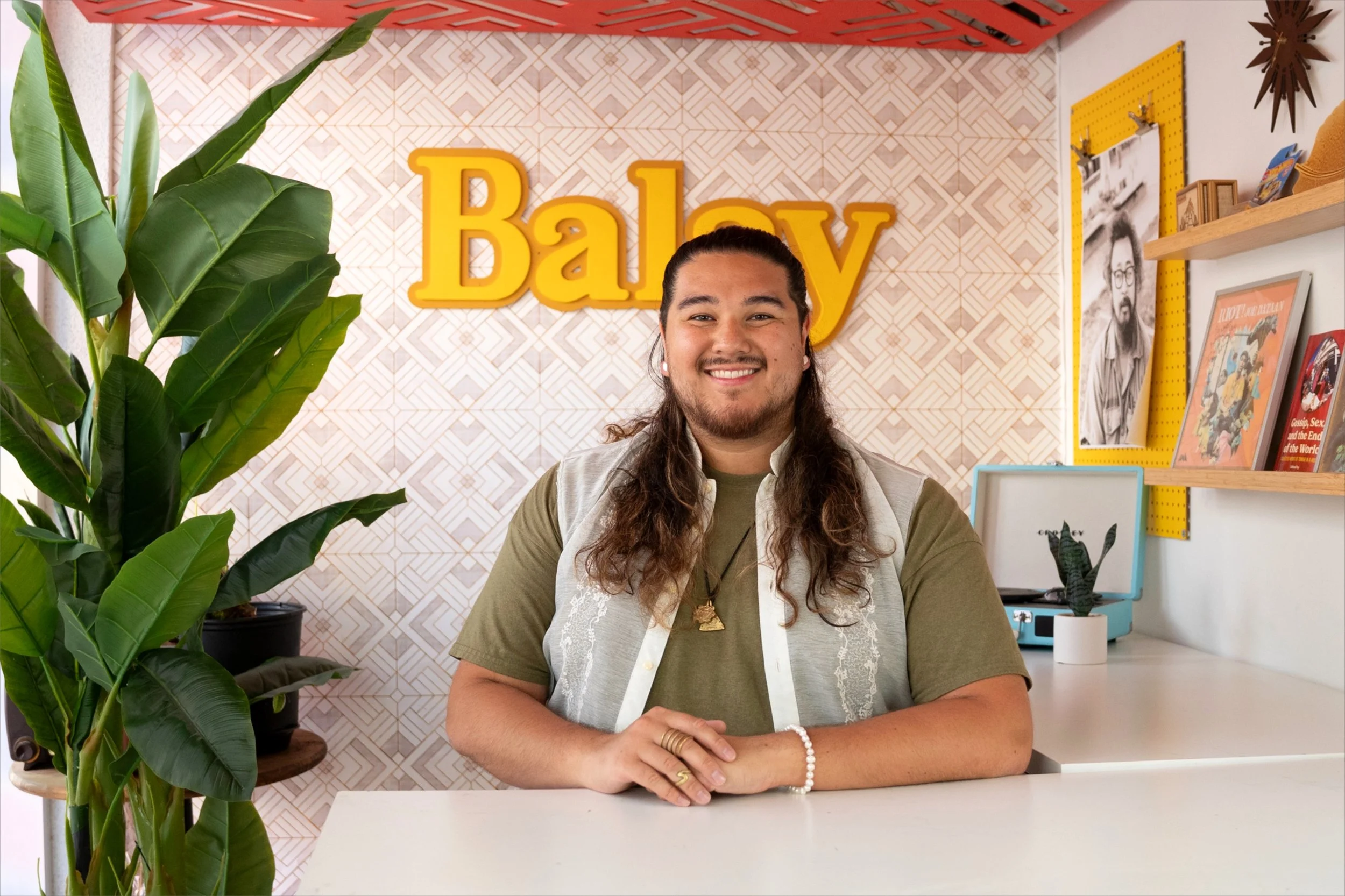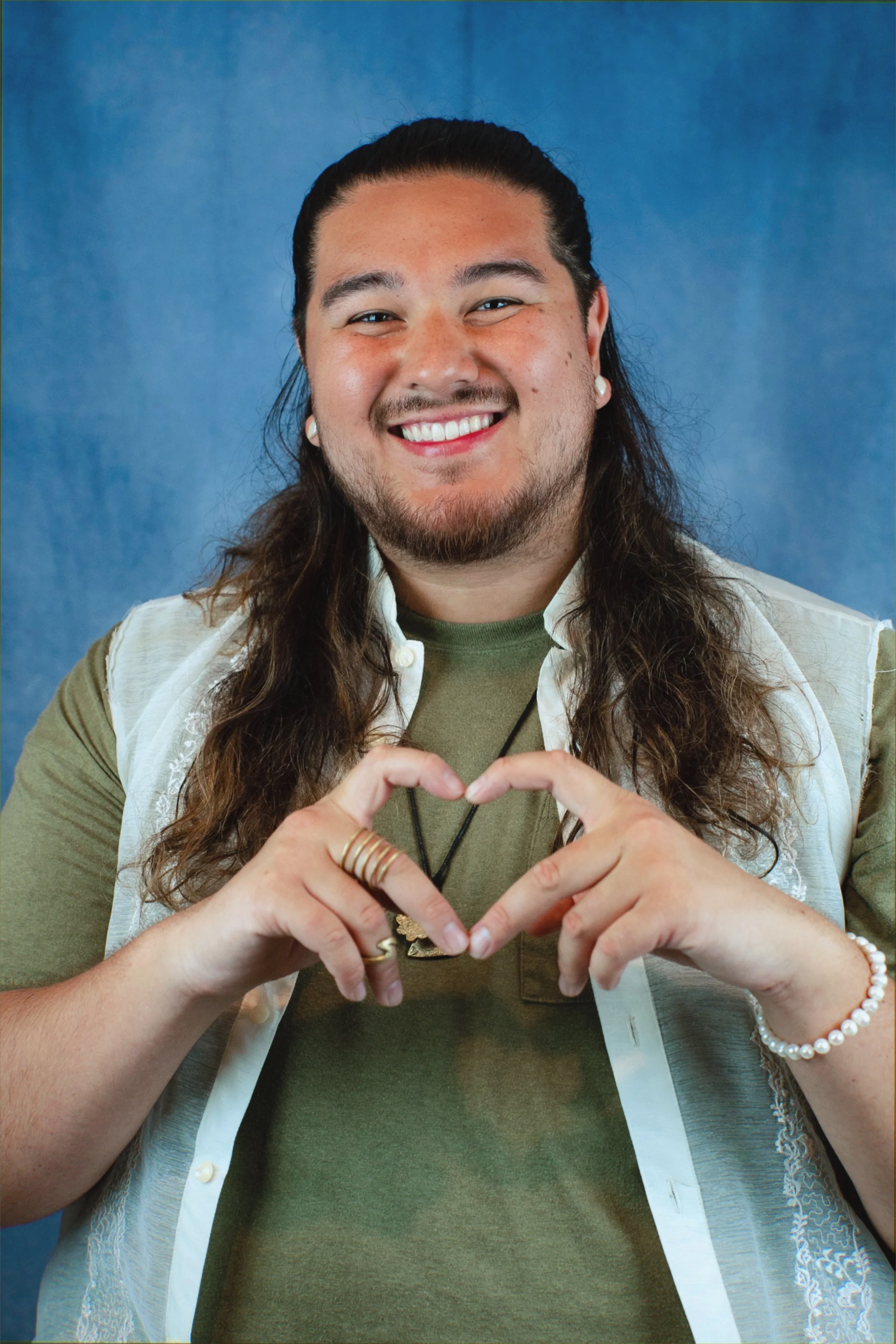“I Stand on Their Shoulders”: Matthew Espina Harris on Rondalla, Kulintang, + Beyond.
by Jaeya Bayani
Matthew Espina Harris is a San Francisco-based musician and cultural researcher. He is a proud member of Agos Rondalla and is a student of traditional Kulintang music, having learned from numerous mentors in California and the Philippines. In 2022, Matt joined the artistic team of Parangal and now serves as their Co-Director of Music. Matt is also the owner and operator of PamanaTreasures, a small retailer that promotes tangible heritage of the Philippines here in North America.
Photos by @alyssamcorpuz
His project, “Makabagong Kumparsa” is a performance piece celebrating the beauty and complexity of Philippine Rondalla Music. The goal of this performance will be to honor the Rondalla music of our past, while also pushing the art form forward by exploring contemporary OPM (original pinoy music) through the lens of traditional Rondalla instrumentation.
“This project encompasses a love letter to San Francisco, Philippine artists, and to the mentors and ancestors of these art forms. Music is my pathway to advocacy and is a multifaceted way to look at how community organizing, folkloric performance, and working with traditionally inspired cultural expression all intersect. ”
Please introduce yourself, your craft, and the project you are working on.
I was first exposed to Rondalla and Kulintang music while in college. I was a transfer student at UC Davis, and I wanted to get as involved as I could when I transferred. I joined the Fil-Am org there, Mga Kapatid, and then one day I saw a poster for a PCN Info Night. I had no idea what Pilipino Culture Night was, so I decided to give it a shot. It was that very night that I learned about all the amazing diversity of the Philippines, and the different musical traditions that we have there. That was my first exposure to Rondalla and Kulintang. From there, I decided to go full-force. After my first PCN, I joined ACPA, American Center of Philippine Arts, which is now known as AGOS. I also joined House of Gongs. I would drive from Davis to Oakland twice per week to learn Rondalla and Kulintang music, and I fell in love with it. Soon after, I joined Little Manila Stockton for a short stint and Parangal Dance Company.
Photos by @alyssamcorpuz
I appreciate the incredible amount of mentorship that I've received in this space, with understanding the indigenous and the colonial cultures of the Philippines—how they’re all part of the fabric of Philippine identity, culture, and our way of expressing ourselves as Pilipinx Americans here in California, more specifically the SOMA district.
Up until this point, what has been the most meaningful experience at Balay Kreative? How has Balay Kreative helped you manifest your vision and intention for your project?
The most meaningful aspects of being part of Balay Kreative – as well as under the umbrella and care of Kultivate Labs – is the [incredible value] to artists and small business owners. As the owner and operator of PamanaTreasures, I have been to many events at Kapwa Gardens. I've garnered so many friends and connections within the community through that alone. [It’s] evolved my presence here within this community to not just be a small business owner, but also a resident artist now. That is one of the most valuable aspects of development for me, as an individual, here in San Francisco; but it’s the network and support that I am able to get here that I find really valuable. I'm excited to take on this project with the support of Balay Kreative. Makabagong Kumparsa is going to be a really fun production, so I'm thankful for the opportunity to work with this team.
“I’m proud of that lineage and of being from a community of practitioners who have propelled Philippine artistry within the Bay Area. I carry all lessons and mentorship with me as I continue to be a practicing artist and cultural researcher of Kulintang and Rondalla.”
Photos by @alyssamcorpuz
How did your cultural mentorship prepare you for this project and for your current role as Music Co-Director of Parangal Dance Company?
I have so many mentors to thank within this space, the first and foremost being Auntie Herna – Herna Cruz-Louie – a foundational person who paved the way for me to grow in my understanding of Philippine dance and music, and also introduced me to this incredible network. After that, we have Ron and Lydia Querian of House of Gongs. We have Eric Solano of Parangal Dance Company, Brian Batugo of Little Manila, Conrad Benedicto of Kulintang Dialect, Titania [Buchholdt], [and] Sir Faisal Monal of Salamindanao... There's so many incredible people to thank and who have been a part of my journey, including Kulintang Dialect and those who have been bearers of the Kulintang tradition here in San Francisco.
They’ve poured their belief and faith into me, and it's why I'm here today as the Music Co-Director for Parangal Dance Company, a mentor to college students across Northern California, and someone who teaches dance and music in other states now. It was all from those first few years in the community, so I have them to thank. I stand on their shoulders and years of dedication to the craft. I'm thankful for what they've been able to provide for me, and for the community as a whole. I’m proud of that lineage and of being from a community of practitioners who have propelled Philippine artistry within the Bay Area. I carry all lessons and mentorship with me as I continue to be a practicing artist and cultural researcher of Kulintang and Rondalla. It’s centered on those first few years of mentorship. I’m thankful for that path and for where I am now.
Photos by @alyssamcorpuz
How does being based in the San Francisco Bay Area influence your craft as a cultural researcher, traditional music practitioner?
I consider myself lucky to have grown up in the Bay Area and to have been exposed to various communities here. Being here in San Francisco has unlocked a lot of doors for me. I’ve lived here for a few years. I grew up in the East Bay, but being in NorCal is a pleasure and a privilege. We have so many Pilipino cultural practices that exist here. There's so much support of artistry, development, and cultural expression, and many events and dance companies here. There is a lot to be thankful for, as a San Francisco resident and an artist practicing music, folkloric dance, and small business here in SOMA Pilipinas.
Why is it important for the next generation to advocate for the continued integration of our history and elders’ legacy through arts, culture, and ethnic studies into our local community?
What I think a lot of Pilipinx youth might not understand or be exposed to yet, is the deep history that our people have here in California. It goes back centuries within the last hundred years. We have made incredible movements in terms of labor, artistry, [and] housing. So much of the advocacy in California is rooted within the Pilipino community. Looking towards the future, how do we integrate newer generations? It's continuing to fight for these stories.
I didn't get exposed to important stories of Pilipino American resistance until I was in college or into my adulthood. If we continue to push these stories as a community and share not just national heroes of the Philippines, but of the diaspora—I think that's where we start to find a lot of common ground. Music, dance, or getting involved [through] volunteering are valid paths to finding community and building ourselves up globally.
Photos by @alyssamcorpuz
Is there any advice you have for your younger artistic self, and/or the next generation of Pilipinx creatives, in writing?
If I could give my younger self advice, I would tell young Matt to start seeking myself out earlier. I let a lot of my career trajectory define who I am, but so much of who I am today is based off my community work. Had I known that, I would have sought out places like Balay Kreative a lot sooner. I hope that, for anyone listening, that you can take that into consideration—whether it be for yourself, for your younger siblings, your cousins. There's so much out there that I didn't even know about until I was 21. [For example,] there’s so much opportunity for youth to get involved; the earlier you seek it out, the more fruitful your future will become.









